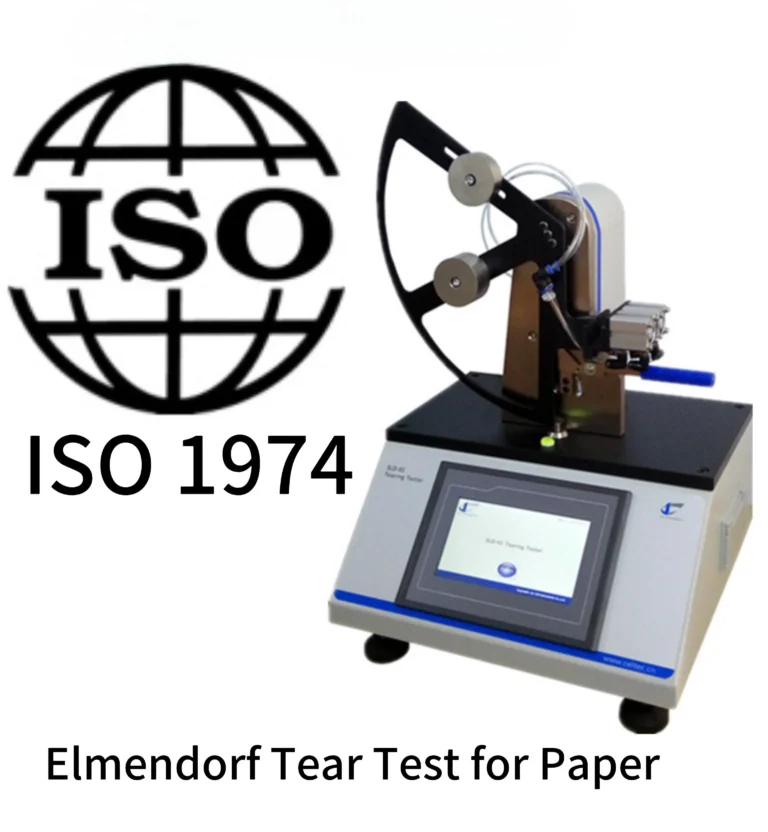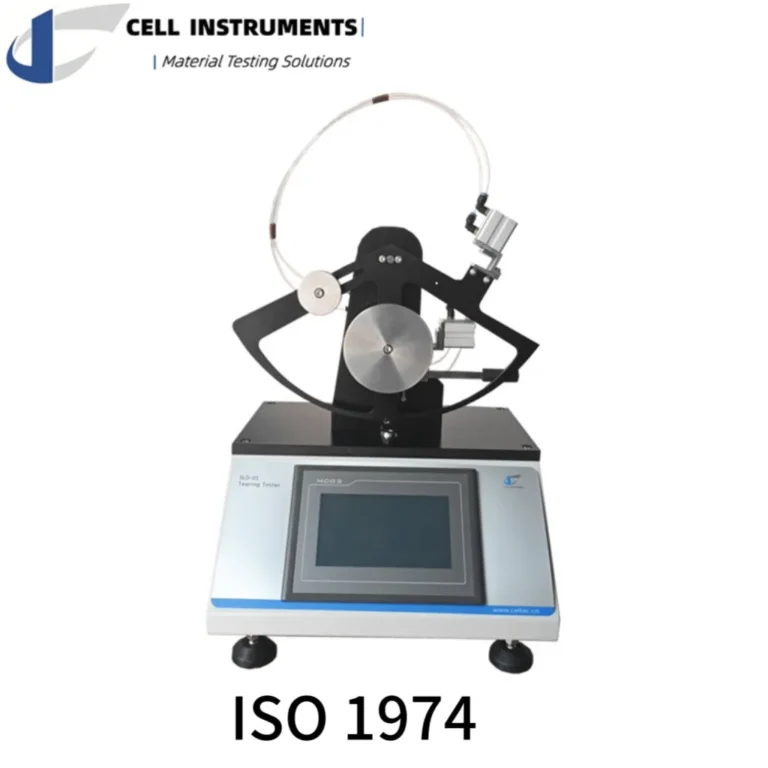
ISO 1974
Elmendorf Tear Test for Paper
In industries like packaging, printing, and specialty paper manufacturing, understanding the tear resistance of paper is essential for ensuring durability and end-use performance. The ISO 1974 standard offers a recognized, reproducible method for evaluating tear strength through the Elmendorf method—a pendulum-based technique that has remained reliable since its introduction in the 1930s.
In this article, we explore the tear test process, equipment requirements, and how instruments like the SLD-01 Tear Tester from Cell Instruments can help deliver repeatable results.
Paper Tear Resistance Measurement Standards and Equipment
The tear resistance test of paper involves applying force to a pre-slit sample and measuring the energy needed to extend the tear. Under ISO 1974, this is done using a pendulum-style tear tester, which quantifies how tough the paper is in both the machine direction (MD) and cross direction (CD).
A proper tear tester for paper—such as Cell Instruments’ SLD-01—should conform to the following core requirements:
-
Pendulum with specified angular swing (27.5 ± 0.5°)
-
Tearing arm length of 104 ± 1 mm
-
Clamping system with precise alignment
-
Built-in calibration weights
-
Fine cutting blade for 20 mm precut slits
-
Force readings in mN, gf, or lbf
Accurate paper tear resistance testing helps guide material selection, optimize product performance, and reduce failure rates in practical applications like envelopes, packaging liners, or printed media.
How to Measure Tear Strength of Paper
Sample Preparation
-
Condition paper samples per ISO 187 at 23 ± 1°C and 50 ± 2% RH.
-
Cut specimens into standardized dimensions, typically 63 mm × 76 mm.
-
Stack sheets as required (e.g., 8-ply or more depending on paper strength).
-
Use a clean blade to create a 20 mm slit in the center of each specimen.
Equipment Setup
-
Ensure the Elmendorf tear tester is leveled and calibrated.
-
Select the appropriate pendulum capacity based on expected tear force (e.g., 400–6400 gf).
-
Reset the indicator scale to zero.
Testing Procedure
-
Mount the specimen between the fixed and movable jaws, aligning the precut slit centrally.
-
Gently clamp the sample to ensure it lies flat and tension-free.
-
Release the pendulum—its motion will propagate the tear across the sample.
-
Record the tear force from the indicator scale or digital display.
-
Repeat the test for a minimum of 10 valid readings in each direction (MD and CD).
Calculations and Reporting
-
Average tear strength = sum of all readings ÷ number of tests.
-
If required, calculate tear index = tear strength ÷ basis weight (g/m²).
-
Record material details, number of layers, direction, test conditions, and any anomalies.
Why Tear Resistance Matters in Paper and Packaging
Tear strength directly affects product usability. Low tear resistance may lead to damaged packaging during transport or poor performance in high-speed printing applications. By performing the tear test paper under ISO 1974, manufacturers can:
-
Select appropriate paper grades for demanding applications
-
Ensure consistent product quality
-
Meet paper tear resistance measurement standards
-
Predict real-world durability of the product
High tear resistance also contributes to a tear proof paper classification, often required for secure documents, medical pouches, and industrial labels.
Elmendorf Tear Tester for Accurate, Repeatable Results

The SLD-01 Tear Tester from Cell Instruments is specifically engineered to comply with ISO 1974, ASTM D689, and other global paper standards. Key features include:
-
Pneumatic specimen clamping for consistent grip
-
Automatic pendulum release to eliminate human variability
-
PLC touch-screen control for easy operation and result display
-
Optional micro-printer and RS-232 port for fast data export
-
Multiple pendulum capacities (200–6400 gf) to accommodate different paper types
With its paper-specific calibration and intuitive interface, the SLD-01 is the ideal solution for labs conducting tear strength tests across diverse paper materials.
Conclusion
Following the ISO 1974 standard for the tear resistance test of paper ensures consistency, reliability, and actionable data in product development and quality assurance. Whether you’re a paper manufacturer, converter, or QA engineer, knowing how to measure tear strength of paper correctly can improve product reliability and reduce material waste.
For accurate, efficient, and standards-compliant testing, Cell Instruments’ SLD-01 Tear Tester is the smart investment for any lab or production facility focused on material integrity and customer satisfaction.
